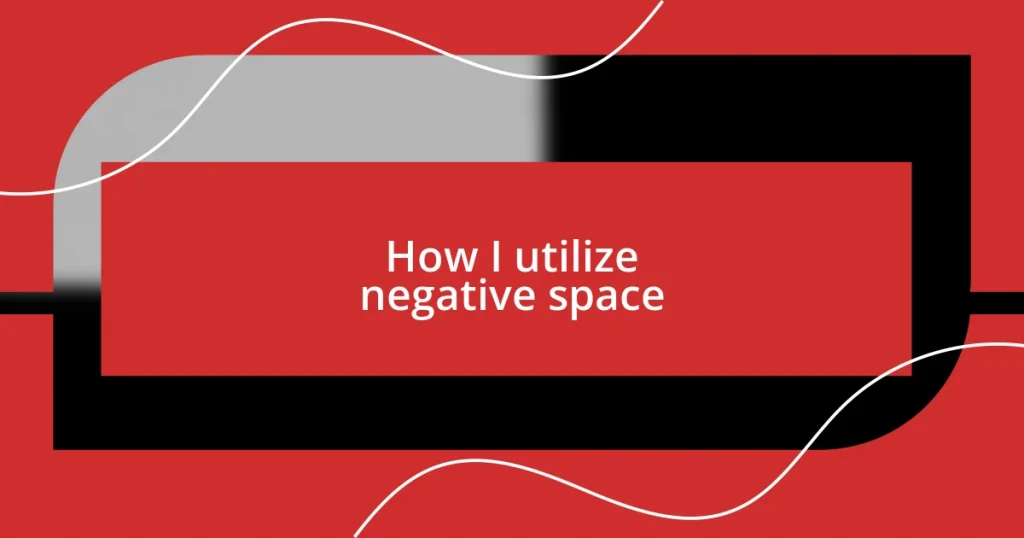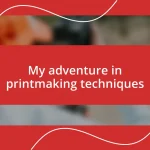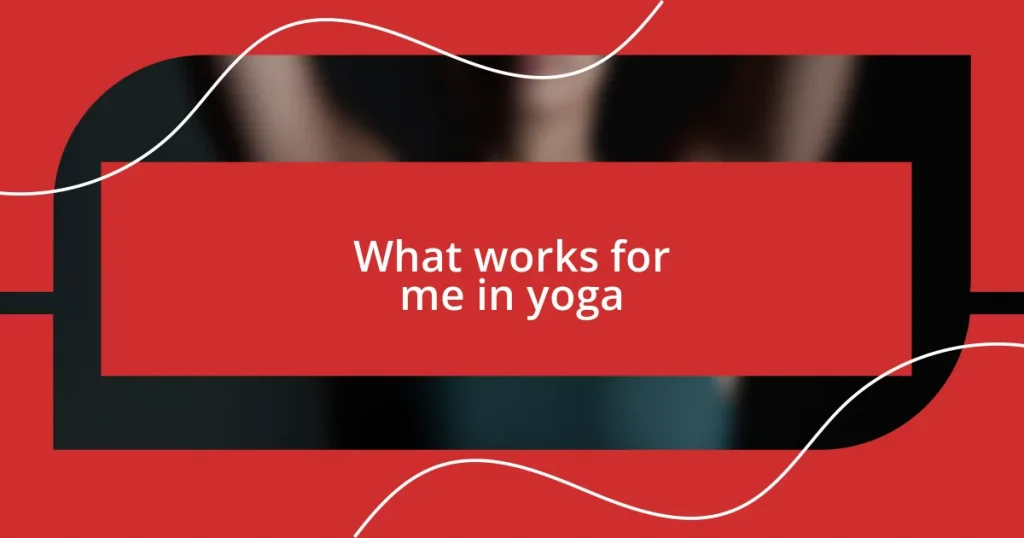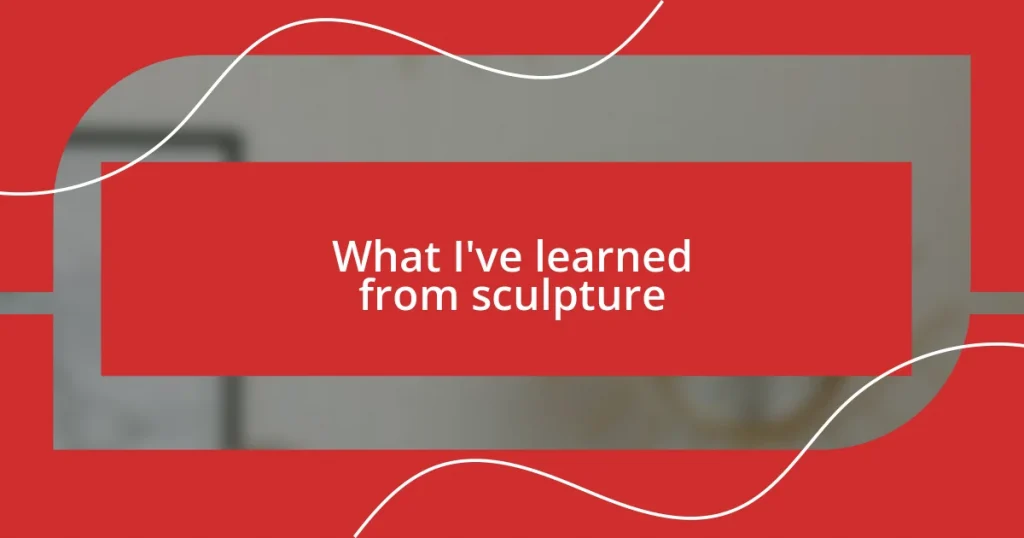Key takeaways:
- Negative space is crucial for enhancing focus, emotion, and visual clarity in design and art, acting as a canvas for creativity.
- Effective techniques for utilizing negative space include careful planning through sketching, layering elements, and framing subjects to evoke stories and emotions.
- Balancing positive and negative space is essential, as both overcrowding and excessive emptiness can detract from the viewer’s experience and overall impact of the piece.
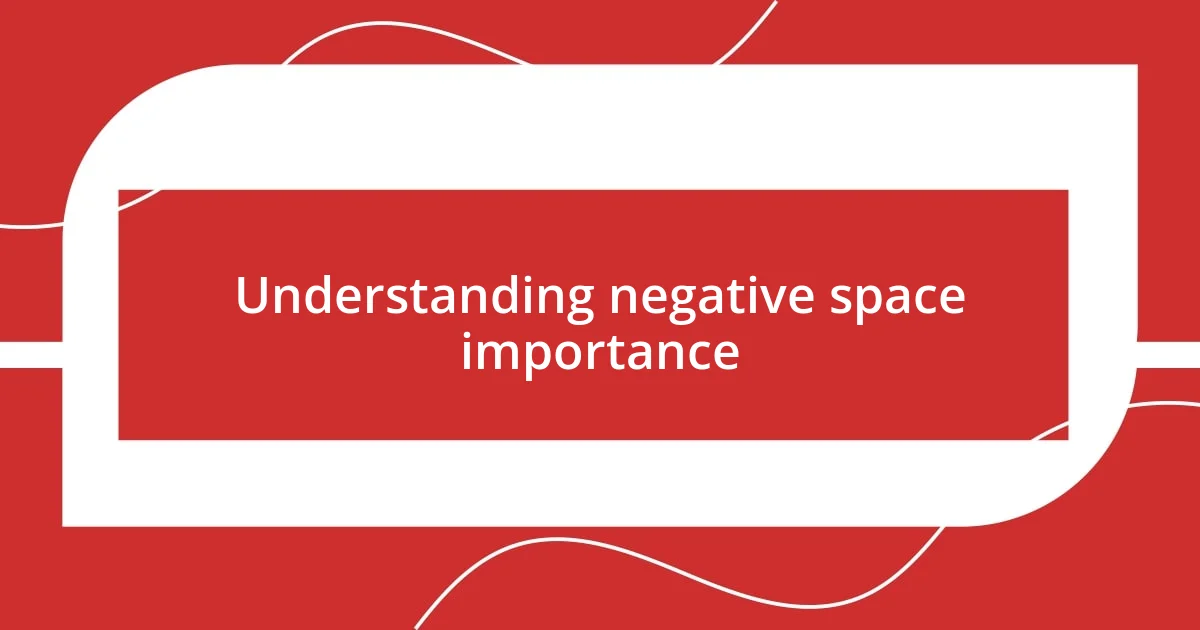
Understanding negative space importance
Negative space is often overlooked, yet it plays a vital role in composition. I remember the first time I truly understood its power. I was experimenting with a minimalist design but found that the areas of emptiness brought focused attention to my subject, making it stand out even more. Have you ever noticed how a simple photo can evoke stronger emotions when there’s just the right amount of space around the focal point?
When I think about negative space, I see it as a canvas for creativity. It’s like giving a breath to an artwork, allowing the viewer’s eye to rest and explore deeper meanings. I often ask myself, what are the emotions I want to evoke? The right use of negative space can elevate that feeling, transforming an ordinary piece into something extraordinary. How often do we find our eyes drawn to a clean, open layout rather than cluttered chaos?
Consider how silence in music enhances the notes. Similarly, negative space can highlight the essential elements in design and art. For instance, I’ve found in my own projects that leaving intentional gaps can create a rhythm, guiding the viewer’s gaze. Don’t you feel more connected to a piece that invites reflection rather than overwhelming you? It’s a delicate dance, one that celebrates absence just as much as presence.
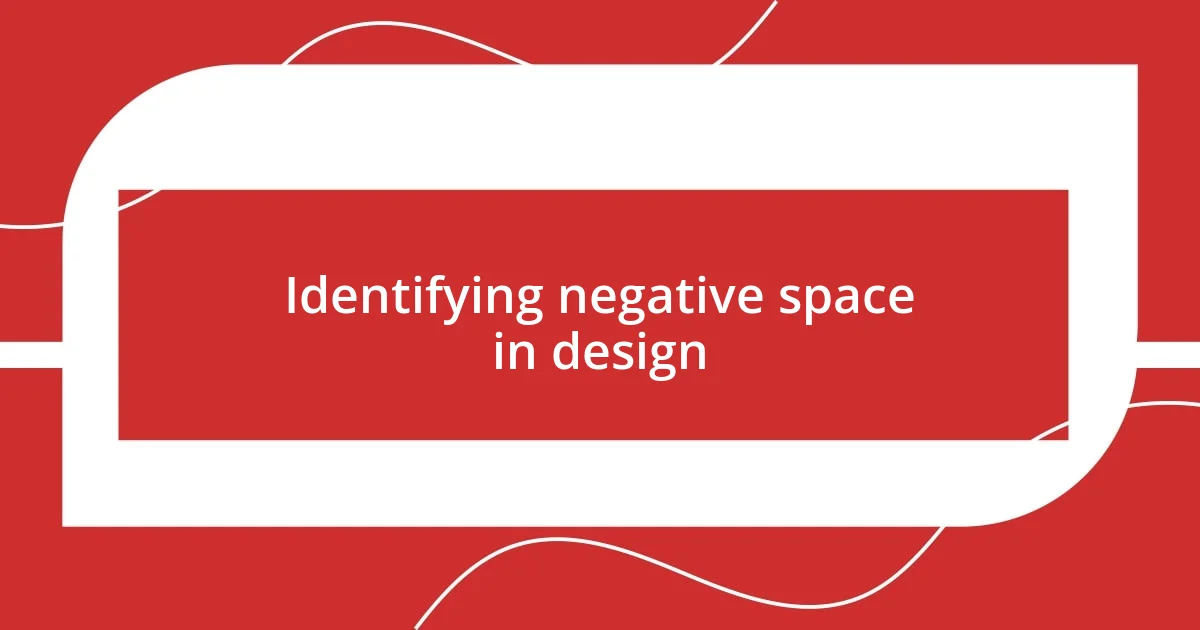
Identifying negative space in design
When I first set out to truly identify negative space in design, I started looking beyond just the objects on the page. I remember strolling through an art gallery, and one piece caught my eye—not just for what it was, but for what it wasn’t. The surrounding emptiness enhanced the colors and shapes, creating a dialogue between the space and the artwork. It became clear to me that negative space is essential for highlighting the focal point, and it often does so in ways I hadn’t initially considered.
To effectively identify negative space, keep these pointers in mind:
- Look for Emptiness: Notice areas with minimal visual elements.
- Assess Balance: Evaluate how the negative space interacts with the overall composition.
- Consider Function: Think about how the space helps convey the message or emotion.
- Use Contrast: Observe how light and dark areas play off each other.
- Test Borders: Play with the edges of your design to see how surrounding space can redefine elements.
I’ve found that when I allow myself to embrace the empty spaces, it often leads to more dynamic designs. It’s like tuning into a silent note that enriches the melody of the piece, allowing for a deeper connection. Have you noticed how sometimes it’s in the quiet moments that the most profound insights arise?
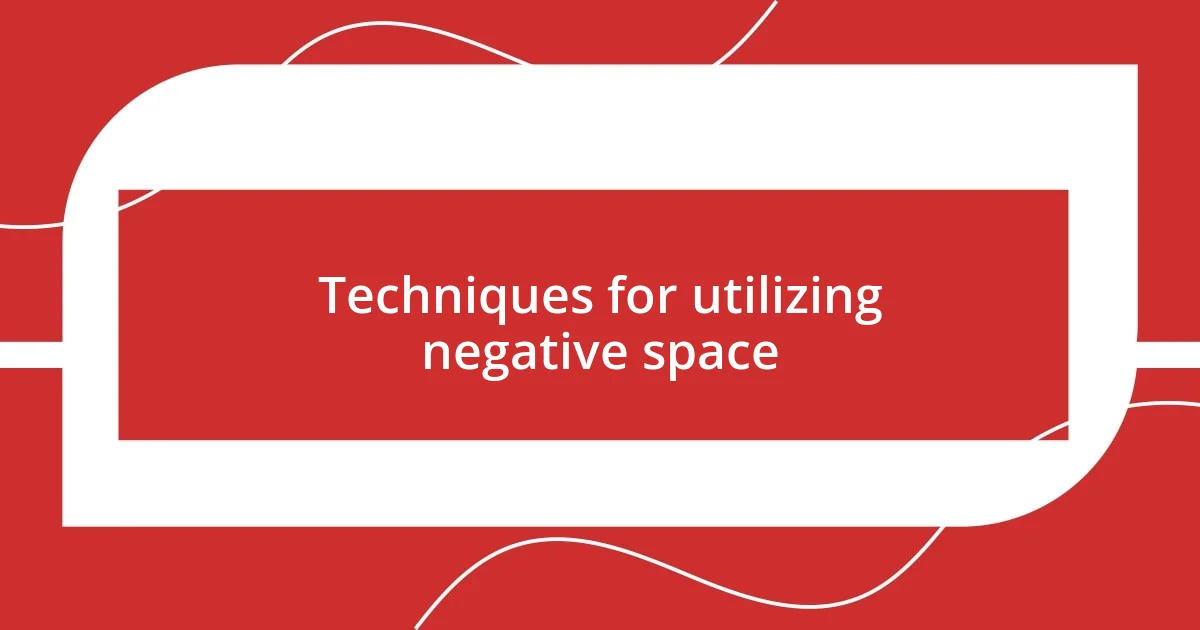
Techniques for utilizing negative space
When it comes to techniques for utilizing negative space, I find that planning is key. In my experience, sketching layouts beforehand allows me to visualize where the empty areas will enhance my focus points. I’ve often started with a blank page, sketching out elements while deliberately leaving spaces between them. This gives me a clearer perspective on how the composition will breathe. Have you ever tried this method? It transforms the design process into an exploration of interaction, rather than just arrangement.
Another technique I embrace is layering. By overlapping elements and letting some fall into the background, I create a dance between positive and negative spaces. I vividly recall a project where I used transparent overlays to depict depth. The result? A composition that invited viewers to penetrate beyond the surface, revealing hidden connections. This plays into the idea that negative space isn’t just emptiness—it can deeply engage and intrigue an audience.
I also like to utilize framing techniques. When I intentionally frame my subject with surrounding negative space, it creates an inviting atmosphere. For example, in one of my photography projects, I positioned subjects against vast landscapes. The surrounding emptiness didn’t just highlight the subject; it told a story of solitude and introspection. How powerful is that, right? By employing such methods, I’ve consistently found that negative space translates into emotional resonance and visual clarity.
| Technique | Description |
|---|---|
| Planning | Sketch layouts to visualize empty areas enhancing focal points. |
| Layering | Use overlapping elements to create depth and interaction between spaces. |
| Framing | Position subjects with surrounding space to evoke emotion and story. |
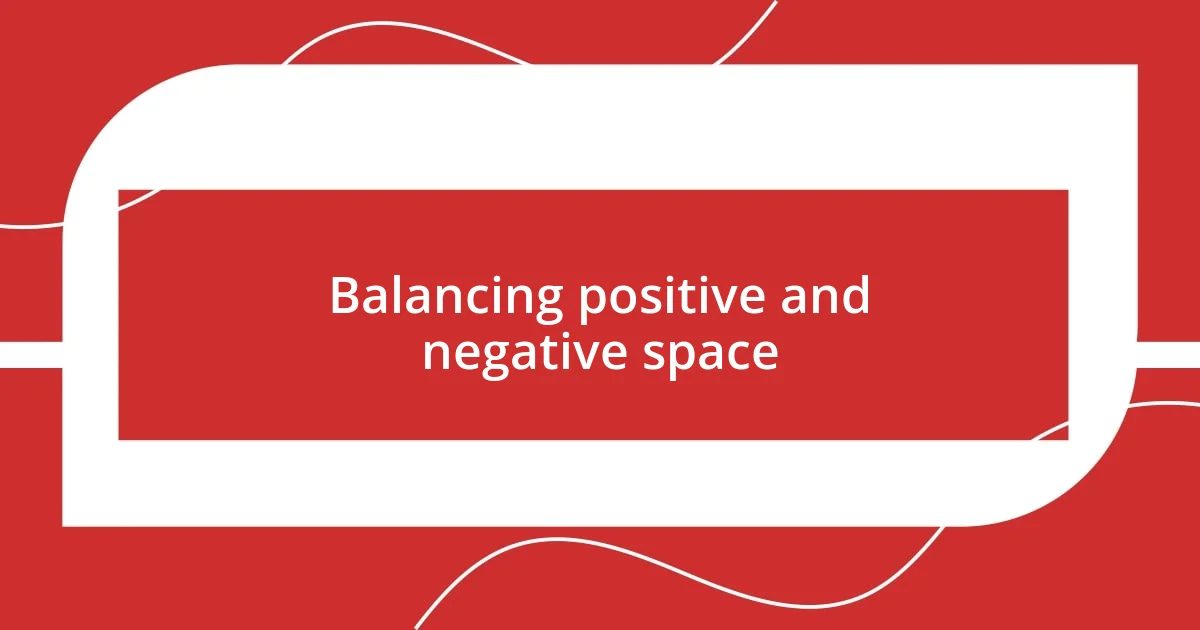
Balancing positive and negative space
Balancing positive and negative space is a dance of harmony. I often find myself adjusting elements until they feel just right, as if I’m tuning an instrument. There was a time when I struggled to find that balance in a design project, making everything too crowded. However, when I intentionally created breathing room around my main focal point, I felt a sense of ease wash over the composition. It’s amazing how that shift can alter the entire mood, don’t you think?
In my practice, I’ve realized that too much positive space can overwhelm, while excessive negative space can lead to a feeling of emptiness. It’s like walking a tightrope; I pay close attention to how one influences the other. I vividly remember working on a branding project where I had to refine the logo design. By carefully adjusting the white space around it, it started to breathe better and convey the brand’s essence more effectively. That subtle touch not only improved the visual appeal but also made the logo more memorable.
Building this balance requires instinct and sensitivity to the viewer’s eye. I always ask myself: what do I want the audience to focus on, and how can I use the surrounding space to enhance this? During my creative process, there are moments when I step back and assess the overall flow. Sometimes, it’s the areas left untouched that speak volumes. Have you ever experienced that thrill of seeing a piece come together simply by embracing its emptiness? It’s truly liberating.
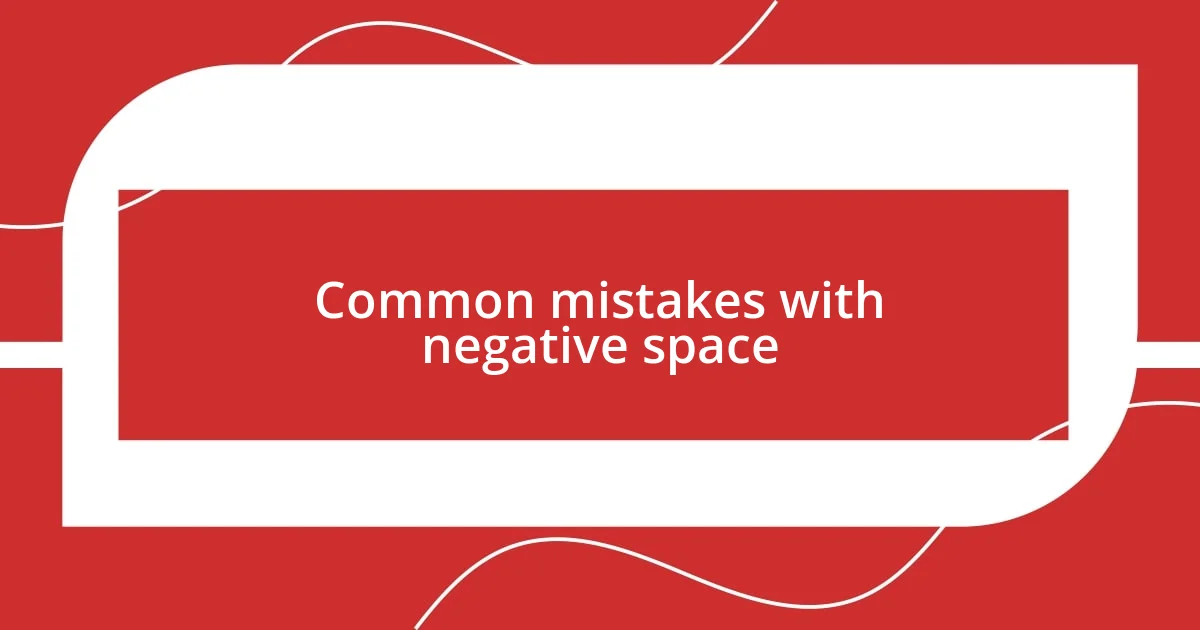
Common mistakes with negative space
One common mistake I often see is neglecting the importance of negative space altogether. I remember a time early in my design career when I crammed every inch of a canvas with elements, thinking it would create impact. Instead, it led to distraction. The viewers couldn’t focus on any one thing. It was a valuable lesson: empty areas are just as crucial as filled ones.
Another pitfall is misjudging the scale and proportion of negative space in relation to positive elements. I once designed a brochure where the text was up against the edges without enough breathing room. It felt suffocating and hard to read. By learning to give the text space to breathe, I transformed the layout entirely. This taught me that negative space should enhance, not hinder, a viewer’s experience.
Finally, sometimes we forget that negative space requires intentionality. I used to think that leaving open areas would be enough. But as I refined my approach, I realized that those spaces must be purposeful. Take my recent experience with a poster design—by carefully considering the positioning of negative space, I created a visual flow that led the viewer’s eye exactly where I wanted it. Isn’t it fascinating how the absence of something can be just as powerful as its presence?










